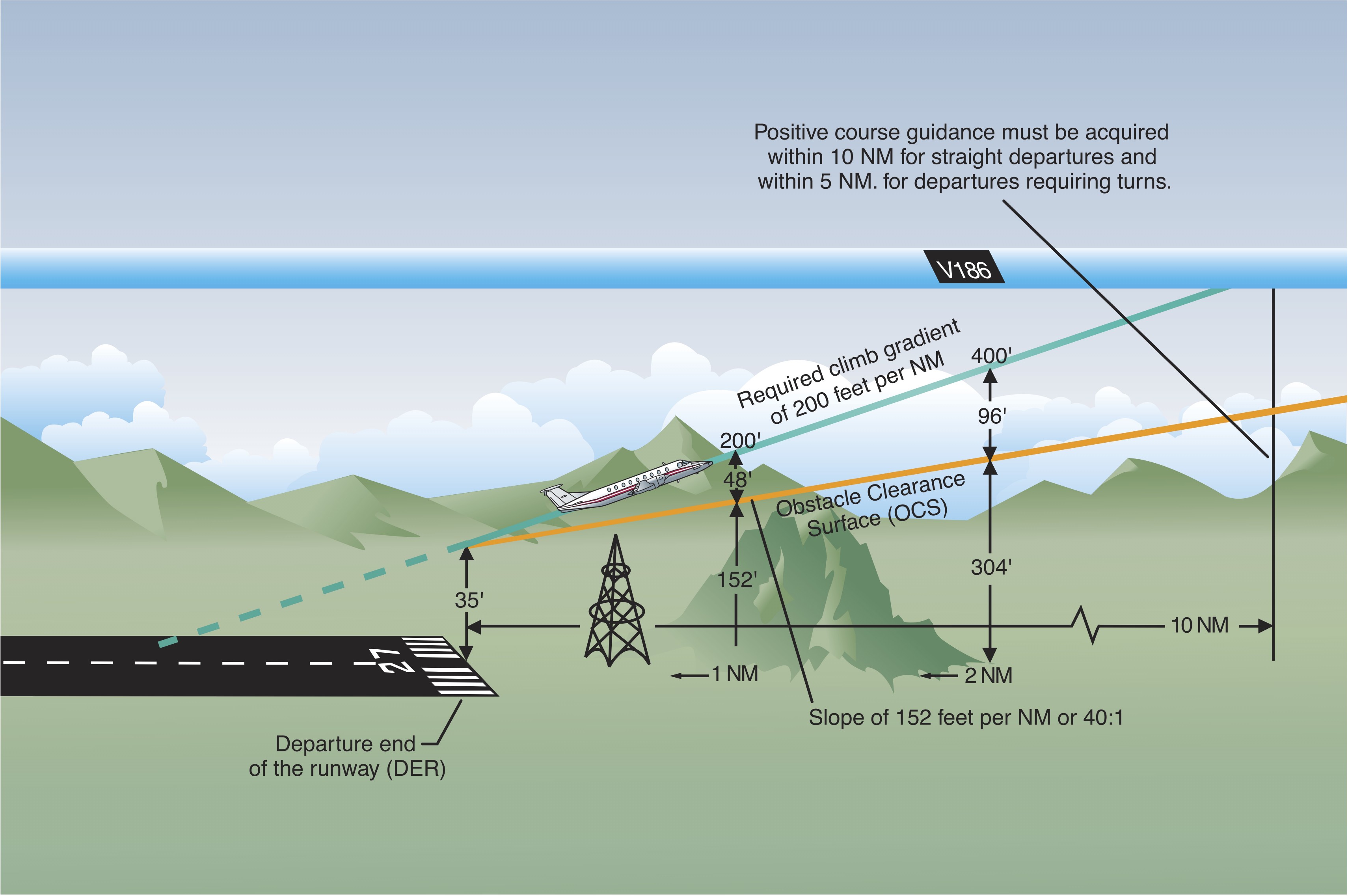Obstacle Departure Procedure

An Obstacle Departure Procedure (ODP) is a published procedure designed to ensure safe obstacle clearance during the initial climb out of an airport, typically used when obstacles require a climb gradient steeper than 200 feet per nautical mile.
Purpose
ODPs are created by the FAA to provide pilots with a standardized method for departing an airport and avoiding obstacles that might otherwise pose a hazard.
When Used
ODPs are used when obstacles are present that require a climb gradient exceeding the standard 200 feet per nautical mile.
Pilot Responsibility
Pilots are responsible for considering terrain and obstacles in the vicinity of the departure airport and determining if an ODP should be flown or if visual obstacle avoidance is possible.
ODP Format
ODPs can be either textual or graphical, providing pilots with specific instructions for climb gradients and altitude restrictions to ensure obstacle clearance.
ATC Involvement
ATC does not typically assign ODPs, and pilots can fly ODPs without prior clearance unless an alternate departure procedure (SID or radar vector) has been specifically assigned by ATC.
Importance
ODPs are crucial for ensuring safe and efficient IFR departures, particularly in areas with complex terrain or obstacles.
